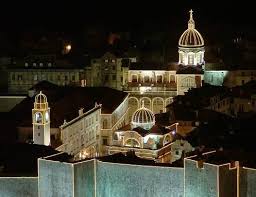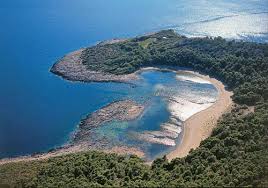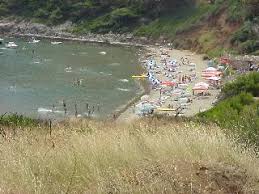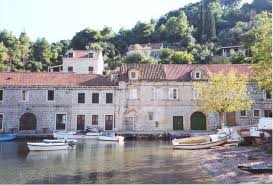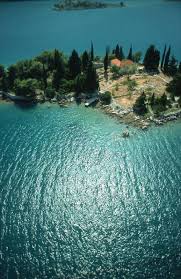Dubrovnik Jews
06.01.2009., utorak
Marranos, Conversos, Christians & Jews
|
Marranos or secret Jews were Sephardic Jews (Jews resident in the Iberian peninsula) who were forced to adopt Christianity under threat of expulsion but who continued to practice Judaism secretly. The term in Spanish meant pigs; it stemmed from the ritual prohibition against eating pork, a prohibition practiced by both Jews and Muslims. In Spanish, the term marrano acquired the meaning of "swine" or "filthy". In contemporary Spanish it is no longer associated with Jews. In Portuguese, the word refers only to crypto-Jews, since pig or "swine" is marrăo or varrăo. Under state pressure in the late 14th century, an estimated 100,000-200,000 Jews in the Iberian Peninsula converted to Christianity. (The numbers who converted and those who migrated from the area have been issues of debate by historians.) The converts were known as conversos. They were also called Cristianos nuevos and Cristăos novos (new Christians) in Spain and Portugal, respectively. (Within Jewish tradition there was sympathy for forced converts and an assumption they would prefer to practice their original faith.) As a result, at the end of the 15th century, a large number of Sephardic Jews & Marranos fleeing persecution in Spain and Portugal settled in the Balkans & Asia Minor on the invitation of the Ottoman Empire. And so it was, that a ship carrying the first refugees came to Dubrovnik in 1492. At first the Republic only welcomed a few. However, over the next 50 years, more kept comming. As the numbers swelled within this small republic (of less the 10,000 people), the church & the state, grew more & more suspiscious of its new neighbours. In the same time, large numbers of those who came as Christians reverted back to their original faith in the new republic. Finally in 1546, the senate allowed the settlement of Jews within the walls of the city. While at first, it was welcomed by the Jews, in effect the senat created a Ghetto on the eastern edge where eventually Jews would be forced to live (thereby restricting the growing community by city walls). As years went by, and laws were patiently applied towards the Jews, a clear gap between Jews and Marranos emerged. The republic in essence was motivating individuals to covert to Catholicism. Jews who were either, Marranos, inter-married, or were already absorbed, had much to loose from staying Jewish. As such, while some continued secretly practising Judism, the vast majority changed faith. The situation was simular in the nearby Ottoman Empire. Jews in theory could set up homesteads & stay Jewish in the Kingdom, as long as they paid their taxes. The difference in the 2 was really the aditional laws (in the Dubrovnik Republic) of 1550s that restricted Jews to the settlement of individual areas. After 1580, Marranos & Conversos from the perspective of the Dubrovnik Senat seized to exist as a seperate entity. Jews who converted weren't much of a threat to anyone. From the perspective of those who stayed Jewish, however, they were still regarded as traitors, and as such, undesirables. Having said that, about 40 years on, across the borderlands of Travunia & Zahumlje, some of those who earlier fled convertion orders, were starting to convert to Islam. This gradual process of assimulation continued, until the 1878, when Bosnia was taken over by the Austro-Hungarian Empire. Partly due to widespread anti-semitism, and partly due to the end of Goverments desire to assimulate its citizens, the Jewish communities, had a huge revival. Between 1880 and 1940, the community was steadly growing, as Marranos who converted years back started reverting. In Dubrovnik the situation was slightly different. When Dubrovnik became part of the Austro-Hungarian Empire, the proclaimed freedom of Napoleon, was short lived, and those so called Marranos within Dubrovnik became part of the National Movement of Croatians, Slavonians & Dalmatians. In WW2, Bosnia fell to Germans. With the revertions in full swing, Nazis managed to whipe out not just the Jewish communities, but the Marranos mostly as well. Dubrovnik it self also fell to Germans. However by then most Dubrovnik Jews fled to the nearby Elafiti Islands, which were occupied by Italians. As the war went on, and Italy confusingly changed sides, virtually all Islands fell to the Local Partizans. As the war drew to the end, 80% of all Jews in Dalmatia were saved. Most left for Israel, with a few making their way across the Channel into the United States. Marranos in Dubrovnik (now well mixed with the locals), stayed. Those who survived in Hercegovina, mostly stayed Muslim, with some taking up the Unitarian Faith. In the recent Balkan Wars, most Muslims in Stolac & Capljina were forced to flee. As Stolac had its fair share of Muslim Converts, it should be noted that some of those have since made their life in Central Bosnia, while others joined the Bosnian Communities overseas. |
- 20:40 - Komentari (0) - Isprintaj - #
04.01.2009., nedjelja
Jewish Stolac
|
I begin this next article with a little help from a fellow enthusiast Stephen Schwartz, who has visited the Dubrovnik Highlands in 1999, and has since wrote a compilation of articles associated with the Balkan Jews in general. Stolac -- the name means "stool" in the South Slavic dialects - is a beautiful village on the river Bregava, which cuts through the bleak, limestone mountains of Hercegovina, about 20 miles southeast of Mostar, the region's main city. The village's surroundings include a massive deposit at Radimilje of pre-Islamic Bosnian burial monuments, or stecci, of inconceivable value for the world Bosnia is a country with five historical identities: Muslim, Sephardic, Serbian, Croatian, and Gypsy. Although Sephardim have been absent in numbers since the Holocaust, they once accounted for one out of six residents in Sarajevo, and their literary achievements, mainly involving poetry and song, are well known to Bosnians. But Stolac is especially important to Jews as the location of the grave of a rabbi, Rav Moshe Danon. Beginning in the mid-19th century, Sephardim made regular pilgrimages there from Sarajevo and elsewhere in Bosnia. The story of the rabbi of Stolac, as Rav Danon is known to surviving Bosnian Sephardim, reveals many facets of the mountainous country's existence, and deserves to be retold -- along with its contemporary postscript. Stolac always had a mixed population, with (Sunni) Suffi Muslims making up the bulk. It developed into a small town right after Jewish settlement of Bosnia. This means that apart from Catholics Orthodox Christians & Muslims, it also had a dozen Jewish families. There are 3 Jewish graves there, one of which is of Rabbi Danon. The other 2 are most likely local residents. There is an old chevra or mourners' shelter at the cemetery, which has been erected 30 meters from the graveyard in 1860s, and has since been restored numerous times (most recently 2004). Close to Stolac, there is also an Archaeological site of the Hellenistic town of Daorson from 4th to 1st BC. Although, possible, it is highly unlikely that there was any Jewish presence in this city. However, it was preciously the survivors of this town that formed a new town of Diluntum Municipium, (modern day Stolac), after the Romans levelled Daorson. As such, with the advance of the Roman Empire, the town quickly grew into a garrison. Since we know that most Jews left Palestine as Army Conscripts during the Roman times, it is conceivable that Jews would have been present on this site as well. Early indications have so far discovered major Roman Presence. In 1492, Sephardic Jews started coming to Bosnia. The first 100 years or so Stolac remained a backwater village far away from Urban centres like Sarajevo, Dubrovnik, & Split. Even Mostar, wasn't much better. However, with an increased Jewish presence in Dubrovnik, after 1546, all that changed. As the Catholic Church, became worried about the increased presence of Jews in their domain, they issued anti-Jewish decrees, followed by expulsion orders. In 1546, Jews who settled outside the city walls of Dubbrovnik, were ordered to either convert to Christianity, thereby, stay, or move to the new Ghetto on the North Eastern Edge of the old city. While most, simply stayed, those who couldn't afford to move to the Ghetto, but wanted to keep their faith, decided to settle else where. Stolac, was just such a place. It was the biggest settlement in the immediate region(beyond the republic). Its industry was mostly farming, however thanks to the River Bregava, it also had a growing secondary industry, based around the Mills. Those Jews who first came here plaighed a mixture of trades, from carpentry, to wool trading. All in all, the numbers never exceeded 30. Since most came as subjects of the Dubrovnik Republic, Ottomans gave them certian exceptions, which eventualy led most to seek their fortunes in the nearby city of Mostar. There is a local account in Bosnian oral tradition of poor families converting to Islam to make ends meet (since Muslim Converts were Free of Tax Obligations). Such records do mention 44 such families in the Stolac region. While it is obvious that most were Christians, there were Jews as well. After WW2, when Yugoslavia was formed, Most Jews in Bosnia were killed. The only town in Dubrovnik Highlands where Jews were saved, was Stolac. However, virtually all Jews who survived migrated to Israel. The small group that stayed simply merged with the local population, with a few migrating to Dubrovnik, Sarajevo & Belgrade. During the 1990s war, Stolac was majorily damaged from a combined military action of all 3 entities (Serbs, Croats & Muslims). 3 out of 4 Mosques were completely leveled. The 2 Orthodox & 1 Catholic Churches suffered numerous direct hits. Most Muslims & Serbs left after the ardious population transfers of 1995, leaving Croatian Roman Catholics as todays Majority. At present there are no Jews in Stolac. The only contact the city has with Jews, is in June, when annual pilgrimages to the tomb of Rav Moshe Danon takes place. |
- 20:44 - Komentari (0) - Isprintaj - #
Rabbi of Stolac - Rav Moshe Danon
|
Until the Holocaust the Jews were Bosnia's fourth nation. Many came in the wake of the Spanish Inquisition of 1492. In 2005 Stephen Schwartz published a fascinating collection of his essays on the Jews of Bosnia and other parts of the Balkans. One of the stories he retells is that of Rav (or rabbi) Moshe Danon of Sarajevo whom he notes is sometimes called "the rabbi of Stolac". Danon however did not come from Stolac, was not a rabbi there but died there and is buried nearby. "Rav Danon," writes Schwartz, "is a Bosnian Jewish saint, or, as Muslims would say, a wali. " The story goes that in 1817 one Dervis Ahmed of Travnik, in fact a Jewish convert to Islam, began to agitate against the Jews. He was executed by the Ottomans but then some of his followers complained to Rudzi-pasha, the next governor of Bosnia who then seized ten of Sarajevo's leading Jews including Rav Danon, demanding a ransom to save them from execution. However a respected member of the community, one Rafael Levi, now exhorted his Muslim neighbours to help. The next day some 3,000 of them freed the Jews. In 1830, Rav Danon decided to leave for the Holy Land. On his way to take a ship from Dubrovnik however he died at a coffee house in Stolac. From then on, until the Second World War, his tomb became a place of annual pilgrimage for Bosnian Sephardim. The tomb, at Krajisni, a few kilometres west of Stolac remains and this is what it says: THIS STONE IS HERE PLACED SO THAT IT BE A SIGN AND MONUMENT FOR THE BURIAL OF THE SAINTLY PERSON WHOSE WORKS WERE WONDEROUS AND OF WHOM IT IS SAID THAT HE WAS PIOUS AND SAINTLY HE WAS OUR MASTER TEACHER AND GREAT HAKHAM RAV MOSHE DANON HIS GOOD WORKS AID US. AMEN. HE LEFT THIS WORLD ON THE 20TH DAY OF SIVAN 5590 Sarajevo Rose: A Balkan Jewish Notebook. Stephen Schwartz. 2005. [pp63-64. Saqi / The Bosnian Institute] |
- 20:32 - Komentari (0) - Isprintaj - #
30.12.2008., utorak
Greater Dubrovnik Area
|
The first 2 articles focused on Jewish life in the City of Dubrovnik itself. I thought it would be a good place to start, considering the name of the Blog. However, the Greater Dubrovnik Area makes up many regions, 90% of which luckly ended up in the Republic of Croatia. The other 10% is the result of the Treaty of Karlowitz of 1699. Here's the first extract from Wikipedia: In 1399, the Dubrovnik Republic (Ragusa) acquired Neum from the lands of Hum, and was added to the territories in the possession of the city, which ruled it for 300 years. In 1699, Ragusa relinquished control of Neum to the Ottoman empire in 1699, at the treaty of Karlowitz. The Ragusan Republic gave the region of Neum to the Turks in the war between the Holy League and the Ottoman Empire. It gave the Turkish army access to the sea, but just as important to Ragusa it gave them a protection from the Venetian territories. This means that todays sub-county of Neum, & parts of Ravno are in Bosnia. Anyhow, the 4 sub-counties (Neum, Ravno, Čapljina, & Stolac) closest to Dubrovnik-Neretva County, unofficially make up the Dubrovačko Zahumlje (or plainly put; Dubrovnik Highlands). Most of this region has always been looking towards Levant (Eastern Winds, as they say!). Hence, part of the Ottoman Empire. Extract from Wikipedia: The Alhambra Decree expelled Sephardic Jews from Spain in 1492. Some of these immigrated to Salonica, sometimes after a stop in Portugal or Italy. The Ottoman Empire, based on the Islamic law regarding people of the book (Arabic: ahl al-kitâb), granted protection to Jews as dhimmis, accepted and even encouraged the settlement on its territory of those affected by the expulsion. Since, most of Bosnia was under the Ottomans, Jewish History in the Dubrovnik Highlands and the neighbouring Trebinje (Travunia) region is much more richer & vivid then in the city state it self. However having said that, Bosnia is underfunded when it comes to protecting & preserving its beautiful heritige. This means that, although, Dubrovnik Republic made sure that the Jewish presence was kept to a minimum in its lands, the culture that did survive, was so well preserved that, the vast Jewish presence in the neighbouring Ottoman Provices, made less difference to the overall picture. What this means basicly is that, Jewish Tourism in Dubrovnik plays a significant role in the further studies conducted on Balkan Jewery, even though most Jews lived beyond the citadel. This is why my next article will try to focus on Stolac, and its Jewish past. |
- 03:02 - Komentari (0) - Isprintaj - #
29.12.2008., ponedjeljak
Jewish Life Outside Dubrovnik's Old City
|
Within the walls of the old city, everything is well documented. Every street, every stone. But, there is more to Dubrovnik then just the old city. Prior to 1546, Jews couldn't settle within the actual walls of the Republic. Instead, a rather small persistant minority, settled in the Suburb of Pile. At that time apart from being protected by the Fort Of St. Lawrence, Pile was just a collection of Artisan Workshops, sandwiched between the sea, today's Hilton Hotel, the City Walls & the Hill Palaces (which where at that time, few and far inbetween). This First community of Jews, weren't specificaly Sephardic, but a blend of the original Roman Jews who settled here well before the Spanish Inquisition. It should be noted that by the time Spanish Refugees started arriving in Dubrovnik, most of these old Jews, had already been absurbed into the framework of the Republic. As such, they weren't looked upon as strangers. For some, this situation changed by the arrival of Sephardic Jews. Neighbouring States around Dubrovnik, weren't always loyal. Their fickleness depended on opportunity. With so many nationalities trading within the Republic, it was important for the state to practise uniformity. Since, Roman Catholicism was the dominant faith, it was important to keep its population striving for the same goal. The original old Jews, slowly inter-married within the Commoner Population. Hence, when Sephardi Jews arrived, the then discreet, Functioning Minyan (Congregation) in Pile, firstly got divided along Religious Divisions, and then seized to exist. Anyone who retained the faith, had to move into the Ghetto, with the new arrivals. As expected, most Pile residence didn't. Most people who come to Dubrovnik, aren't shown this, since Jewish history most visibly, is found in the later built Jewish Ghetto in the (not so pretty) Eastern Edge of the Old City. But if you carefully look at some buildings while walking along the sea bank towards Šuljič Bay, you'll notice the old doorposts where Mezuzah used to be kept, still vivid. In Pile, as you're looking from the Bus Station towards a 400 year old Plain Tree, right across it, is the original site of the first ever Dubrovnik Synagogue (which was really just a simple prayer house). Ofcource, just like most commoner dwellings in Pile, the documentation either didn't exist or didn't survive the 1667 earthquake. Today the same plot is occupied by 4 Private Residences, probably built in the early 1750. Pile is also famous for the modest Jewish drinking fountain today over shadowed by a huge neon light statue for the fallen victims of the recent War. Besides that there is also, the Jewish cemetery at Boninovo, kept and maintained by the Dubrovnik Synagogue. It was founded in the late 19th century and has about 200 tombstones, including some 30 centuries-old stones transferred there from an even earlier cemetery. As a whole, the tombs provide a textbook illustration of different types of Jewish grave markers. Some are traditional Sephardic-style horizontal slabs with ornamental carving and Hebrew inscriptions. Others, as in Split, are horizontal tombs sharped like sarcophagi with peaked or gabled roofs and Hebrew inscriptions on their sides. Others still are the upright tombstones typical of Ashkenazic Jews, who originated in central Europe. There used to be another Jewish cemetery, but in the 1960s due to congestion, it got turned into public toilets, parking facility & a service road. |
- 02:05 - Komentari (1) - Isprintaj - #
28.12.2008., nedjelja
A visit to Jewish Dubrovnik
|
By Arthur Wolak Dubrovnik, a UNESCO World Heritage site situated in the south of Croatia along the coastline of the Adriatic Sea, is among the most prominent tourist resorts in the country. Its breathtaking panorama, best viewed from high above the city, is unparallelled. What few may know, however, is that in the heart of Dubrovnik's well-preserved medieval Old Town stands Europe's oldest functioning Sephardi synagogue. After going through Dubrovnik's Pile Gate – separating the suburb of Pile (pronounced "Pee-lay") from the walled city of Dubrovnik – one is transported into a medieval world of ancient streets lined with stone palaces, Venetian-style buildings, bell towers, marble-paved squares, monasteries and fountains. The surrounding fortifications, first begun in the eighth century, reflect a powerful metropolis with considerable historic economic importance, derived mostly from maritime and commercial trade. After gaining independence from the Republic of Venice in 1358, Dubrovnik remained a self-governing free city until Napoleon's forces marched through the Pile Gate in 1808, ending 450 years of independence. While the small Jewish population of Dubrovnik traces back to the 14th century (if not earlier), the number grew significantly following the Spanish expulsion in 1492. Of the Sephardi families passing through on their way to Turkey, several decided to settle in Dubrovnik, helping solidify a modest but strong Jewish community in the city. However, after Napoleon, Dubrovnik fell under various jurisdictions: the Austro-Hungarian Empire (1815-1918); the Kingdom of Serbs, Croats and Slovenes; a pro-Nazi independent Croat State during the Second World War; and a communist Yugoslavia under General Tito for much of the 20th century. Over the course of these transfers, the Jewish population of the city dwindled to about 87 prior to the Second World War. Of this number, about 27 perished in the Holocaust or as partisans who fought the Nazis. Today, there are just 44 registered Jews in Dubrovnik, with about 19 of them residing in the United States, yet the synagogue continues to function, with services conducted by members of the local community and tourists often helping form a minyan. A rabbi visits occasionally from Zagreb, the Croatian capital. Life was not always idyllic for the Jews of the independent Republic of Dubrovnik. There were many episodes of persecution (most notably in 1502, 1515, 1571 and 1622), which led to false accusations and even executions. By the mid-18th century, as Dubrovnik's economic position declined, the small community of Jews was prohibited from engaging in commerce, and was confined to live in the ghetto. However, French rule – lasting from 1808 to 1815 – gave equality to the Jews of Dubrovnik, annulling all prior restrictions. Although Austrian rule brought in new laws regulating their lives, full emancipation would occur towards the end of the century. In the years of Dubrovnik's independence, the Jews – given their broad knowledge of languages – fit well in Dubrovnik's highly developed economy. Many served as interpreters. Others became merchants and importers of materials, such as wool and spices from the east, and textiles and paper from the west. Beyond commerce and maritime trade, many Jews served as insurers and owners of ships. Although prohibited from owning land or buildings, Jews were allowed to invest in ships that served Dubrovnik's trade routes. Many also served as a significant number of the city's physicians. In 1546, the growth of the Jewish population led Dubrovnik officials to allow Jewish settlement within the city, establishing Ulica Zudioska (Street of the Jews) as the Dubrovnik Ghetto. A few buildings were allocated for newcomers to settle within the fortified walls. Other houses were leased, while the rest of the Jews lived outside of Dubrovnik's fortifications. By the mid-17th century, this situation led to the establishment of the synagogue on the second floor of one of the 14th-century buildings, at Ulica Zudioska 3. The synagogue is a highlight of any visit to Dubrovnik. To get there, pass through Pile Gate and head east down the main street of Placa (also known as Stradun), an impressive pedestrian promenade, which extends to the Clock Tower and Small Onofrio Fountain at the other end of town. Next, make a left at Ulica Zudioska, just a couple of blocks before the Gothic and Renaissance-styled Sponza Palace. There, just a short walk up the narrow stair-lined road, stands the small but ornate synagogue (and Jewish museum) on the left side. Not only is this Europe's oldest functioning Sephardi synagogue, but it is Europe's second oldest synagogue (after Prague) in continuous use. The Jewish community was also able to purchase land for a cemetery just outside the city fortifications. In the 19th century, during Napoleon's rule, a new site was established for the cemetery in nearby Boninovo, where it remains to this day. The Dubrovnik synagogue, carefully constructed in 1652 in the Italian baroque style, retains the elegance of the original workmanship. The main sanctuary, featuring an elaborate chandelier, colorful fabrics and gold work, is divided by three arches. The bimah (podium) is located under the central arch, while the aron ha-kodesh (holy ark), surrounded by two large wooden arches, stands along the eastern wall facing Jerusalem. Although the synagogue survived the major earthquake of 1667, it suffered serious damage to its roof after being hit twice during the (Serbian led) Yugoslav shelling of Dubrovnik in 1991. Repairs were completed by 1997, and the synagogue was again fit for use. In 2003, the first floor was converted into a museum by Dubrovnik's small but determined Jewish community. It became the first Jewish museum in Croatia. To preserve the memory of the many centuries of Jewish presence there, the museum contains a number of small exhibits: archival documents, a Holocaust memorial and a collection of religious objects, including several elaborate Spanish, Italian and French Torah scrolls, each created between the 13th and 17th centuries. Also on exhibit are various Torah covers made from silk and decorated with 17th-century golden embroidery. Exiting the walled city, just outside the Pile Gate entrance to Dubrovnik, remains a little-known but unique Jewish site – a modest water fountain that serves the local population. Before Napoleon's arrival to fortified Dubrovnik, Jews were not allowed to drink water from the other two fountains in the city. They were restricted to the "Jewish Fountain," as it is still called today. When Napoleon granted Jews equal rights, all fountains were then accessible to them, and the Jewish Fountain was removed from within the Old City's walls – but not from the area. It was kept in Pile as a permanent monument. Today, just like the other fountains – and the rest of the public spaces of contemporary Dubrovnik and its suburbs – the Jewish Fountain is accessible to everyone. Indeed, the pearl of the Adriatic- Dubrovnik, and its many sites of interest, should not be missed by any adventurous traveller. Arthur Wolak is a freelance writer in Vancouver. |
- 05:00 - Komentari (0) - Isprintaj - #
Siječanj 2009 (3) Prosinac 2008 (3) Dnevnik.hr |
|||||||||||||||||||||||||||||||||||||||||||||||||
|
Opis bloga
Blog je posvečen Zajednicama Dubrovačkih, Bokeljskih, Zahumskih i Trebinskih Židova, koji na ovim prostorima žive več dugih 500 godina. Cilj bloga je vratit Dubrovniku autentičnost povjesti Republike i Istočne Hercegovine, iz perspektive jedne ugledne bogate manjine, koja i dan danas ostavlja otiske našim krajolikom. Blog če biti po naj više na Engleskom (meni drugi jezik), i bit če u korist mnogo brojnim turistima. Često se dogodi da se povjest lako stvara u mjestu novčanih događaja. Bez neke sumje, provat čemo razotkrit neke legende, i možda (uz pomoč mnogo brojnim Povjesničara na Balkanu), "stvorit nove" :)) |
|||||||||||||||||||||||||||||||||||||||||||||||||


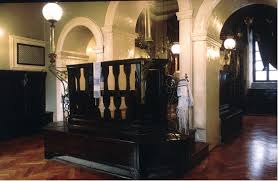





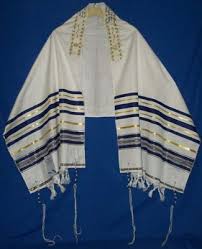
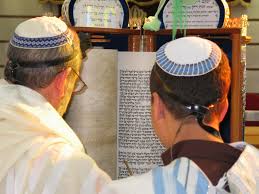






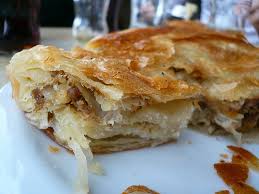

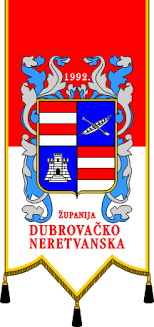
07mo9.gif)










